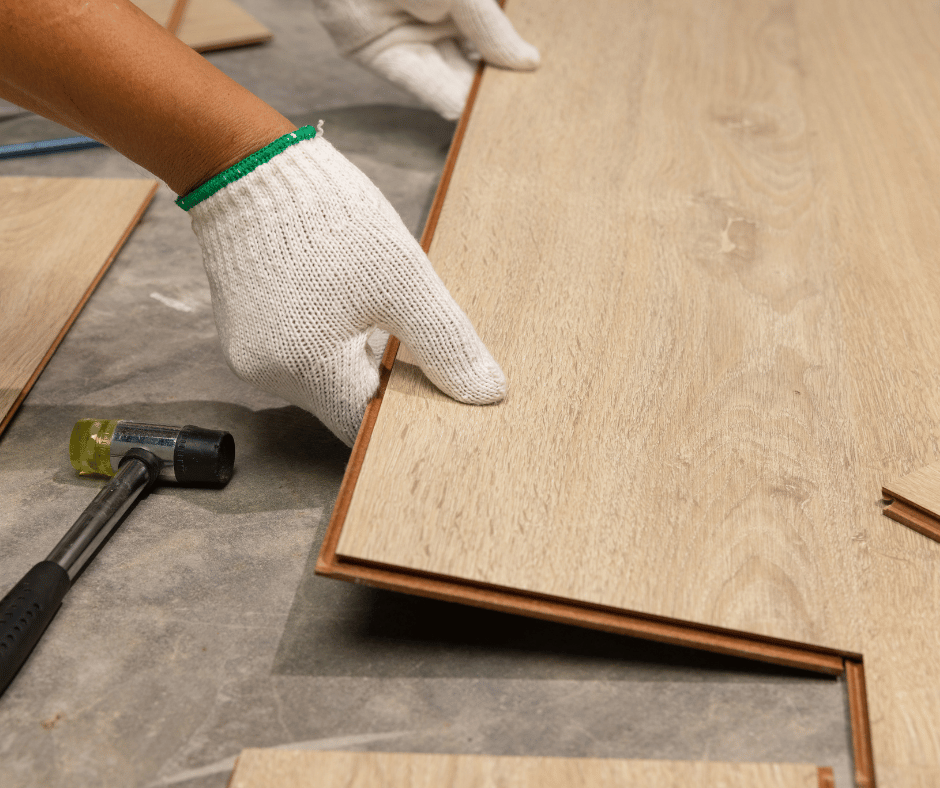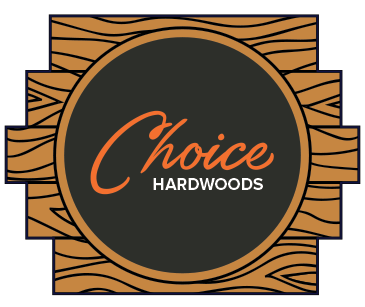How much does it cost to install hardwood floors?

When it comes to home renovations, installing hardwood floors is one of the most popular and impactful investments. Hardwood floors add warmth, elegance, and long-term value to your home, but understanding the costs associated with installation can be tricky. As experts at Choice Hardwoods, we are here to break down the factors that influence the price of hardwood floor installation and provide a comprehensive guide to help you make an informed decision.
In this article, we’ll explore the various elements that affect the total cost of hardwood floor installation, including materials, labor, and the complexities of the job itself. From the type of wood and plank size to the subfloor and layout, every decision you make will play a role in the final price. Let’s dive in and explore the many factors that contribute to the overall cost of hardwood floor installation.
Understanding the Basics: The Cost Per Square Foot
The most straightforward way to assess the cost of installing hardwood floors is to look at the cost per square foot. On average, hardwood flooring costs between $5 to $12 per square foot for materials, with labor ranging from $2 to $5 per square foot depending on the complexity of the installation. This price range can vary significantly depending on several key factors, such as the type of hardwood you choose, the size of the planks, and the difficulty of the layout.
Keep in mind that these numbers are averages, and your specific cost could fall outside of this range based on the variables discussed below.
Key Variables That Affect Hardwood Floor Installation Costs
1. Type of Hardwood Material
The type of wood you choose will have a major impact on the cost of your hardwood floor installation. There are several types of hardwood flooring, and each has its own price point:
-
Domestic Hardwood (Oak, Maple, Cherry, etc.): These woods are typically more affordable and widely available. For example, oak is one of the most common and cost-effective hardwoods, with prices ranging from $5 to $7 per square foot. Other domestic options like maple or cherry may be slightly higher but still fall within a similar range.
-
Exotic Hardwood (Brazilian Cherry, Teak, Mahogany, etc.): Exotic hardwoods tend to be more expensive due to their rarity and the cost of importing them. Prices for these woods can range from $8 to $15 or more per square foot, depending on the species. While exotic hardwoods are stunning and unique, they often carry a higher price tag both for materials and labor due to their density and complexity to install.
-
Engineered Hardwood: Engineered hardwood consists of a thin veneer of hardwood on top of a composite core. While engineered wood is less expensive than solid hardwood, it can still offer the same appearance and appeal. Costs for engineered hardwood typically range from $4 to $8 per square foot, making it a more affordable option, particularly for homes with moisture concerns.
-
Reclaimed Wood: Reclaimed hardwood, sourced from old barns, factories, and other structures, is an eco-friendly and distinctive choice. However, due to its rarity and the additional labor required to restore the wood, it can be significantly more expensive—$10 to $20 or more per square foot.
2. Plank Width and Length
The width and length of the planks you choose will also influence the price of installation. Wider planks, often 5 inches or more, are generally more expensive than standard-width boards (usually around 2.5 to 3 inches) because the wood must be harvested and milled in larger pieces, which results in more waste. Wide plank hardwood flooring typically costs between $8 to $12 per square foot.
Additionally, the length of the planks can impact labor costs. Shorter planks require more cuts, which can increase installation time, while longer planks can reduce the number of cuts needed, speeding up the process. As a result, longer planks can sometimes result in a slightly lower cost per square foot in terms of labor, but they can be harder to source and more expensive for the material.
3. Installation Method: Staple-Down vs. Glue-Assisted
The method used to install the hardwood floor can also affect the overall cost. The two most common installation methods are staple-down only and glue-assisted staple-down. Here’s how they differ:
-
Staple-Down Only: This is the more common method and the least expensive. In this process, the hardwood planks are stapled directly into the subfloor. This method is typically used when the subfloor is made of plywood or another stable material. It is quicker and less labor-intensive than glue-assisted methods, making it the more cost-effective choice. The cost for staple-down installation typically ranges from $2 to $4 per square foot for labor.
-
Glue-Assisted Staple-Down: In some cases, particularly with engineered hardwood, a glue-assisted installationmay be necessary. This method involves applying a layer of adhesive to the subfloor before stapling down the planks. This is typically required for more delicate materials or in areas with moisture concerns (like basements). The labor cost for glue-assisted installation is usually higher, ranging from $3 to $6 per square foot, as it involves more time and materials. Additionally, the adhesive used in the process can add to the overall cost of the installation.
4. Subfloor Conditions
The condition of the subfloor can play a major role in the cost of installation. If the subfloor is level, dry, and clean, the installation process is relatively straightforward, which keeps costs down. However, if the subfloor requires additional preparation, such as leveling, cleaning, or repairing damaged areas, the cost of installation can increase. This is especially true for older homes where subfloors may have settled or developed issues over time.
Here are some factors to consider:
-
Uneven Subfloor: If your subfloor isn’t level, it may need to be leveled with a self-leveling compound or plywood sheets before the hardwood can be installed. This can add $1 to $3 per square foot to the installation cost, depending on the extent of the work needed.
-
Existing Floor Removal: If you’re replacing an existing floor, such as carpet, tile, or vinyl, this can increase the overall cost. The labor cost for removing old flooring can range from $1 to $2 per square foot.
-
Moisture Issues: In areas with high moisture, such as basements or homes with poor ventilation, a moisture barrier may need to be installed before the hardwood. This can cost an additional $1 to $2 per square foot.
5. Room Layout and Difficulty of Installation
The complexity of the room layout is another important factor in determining installation costs. More intricate layouts—such as rooms with a lot of corners, angles, or alcoves—will require more cutting, which increases labor time and cost.
-
Straightforward Layouts: A simple rectangular room with minimal cuts is the least expensive to install. The cost per square foot for a straightforward layout is closer to the lower end of the range, typically $2 to $4 per square foot for labor.
-
Complex Layouts: Rooms with intricate designs, such as diagonal or herringbone patterns, or rooms that require many cuts around obstacles (e.g., cabinets, fireplaces, or staircases), will take more time and expertise. The additional labor costs for these complex layouts can add $1 to $4 per square foot to the total price.
6. Flooring Finish and Sealing
Another cost consideration is whether or not the hardwood floor has been pre-finished or will require finishing after installation. Pre-finished hardwood comes with a factory-applied sealant, which means it’s ready to install right away. This option tends to be more cost-effective because it eliminates the need for finishing after installation.
-
Pre-Finished Floors: These tend to be a bit more expensive for the material (around $1 to $3 more per square foot) because the finish is already applied, but it saves money on labor because there’s no need for additional finishing.
-
Site-Finished Floors: If you choose to install unfinished wood floors, they will need to be sanded, stained, and sealed after installation. This adds both time and material costs. Site-finishing can add $2 to $5 per square foot to the total cost.
7. Geographic Location and Labor Rates
Labor costs can vary significantly depending on where you live. For example, labor costs tend to be higher in urban areas or regions with a higher cost of living. On the other hand, rural areas may offer more competitive labor rates. In some cases, labor in high-demand areas can reach $6 per square foot or higher, whereas smaller towns may offer rates closer to $2 per square foot.
Additionally, seasonal fluctuations can affect the price of installation. The spring and summer months tend to be busier for flooring installers, which could increase labor costs due to higher demand.
The Bottom Line: Estimated Total Installation Cost
Based on all of these variables, the total cost to install hardwood floors can range from $7 to $20 or more per square foot, depending on the choices you make regarding materials, layout, and complexity. For a standard 200-square-foot room, you can expect the cost to range from:
- $1,400 to $2,500 for budget materials with simpler installation and no subfloor issues.
- $3,000 to $4,500 for mid-range materials and more complex installation or subfloor preparation.
- $5,000 to $6,500 or more for premium materials, exotic woods, intricate layouts, and site-finishing.
Conclusion
Installing hardwood floors is an investment that can dramatically transform your home. However, the costs associated with the installation process depend on a variety of factors. At Choice Hardwoods, we always recommend working with a professional to assess your specific needs and budget, ensuring that the final result is not only beautiful but also cost-effective. By understanding the factors that contribute to hardwood floor installation costs, you can make more informed decisions and choose the best option for your home.

